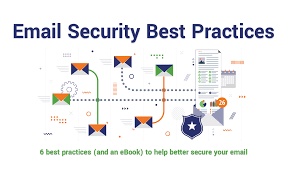Introduction
In today's digital age, email marketing has become an essential tool for businesses to engage with their customers. However, as technology advances, so do the risks associated with it. Security breaches and cyber threats can severely damage a brand's reputation and compromise sensitive customer data. To ensure the safety and integrity of email marketing campaigns, it is crucial for marketers to adhere to strict security guidelines. In this blog post, we will explore eight essential guidelines that email marketers should follow to protect themselves and their subscribers from potential security threats.
Implement Strong Authentication Measures
One of the first lines of defense against email security threats is the implementation of strong authentication measures. By adopting email authentication protocols such as Sender Policy Framework (SPF), DomainKeys Identified Mail (DKIM), and Domain-based Message Authentication, Reporting & Conformance (DMARC), marketers can verify their domain's authenticity and prevent email spoofing and phishing attacks. These protocols work together to authenticate the sender's identity and ensure that messages are delivered from legitimate sources. By implementing these measures, marketers can build trust with their subscribers, as well as protect their brand from being associated with malicious activities.
Regularly Update and Patch Systems
Email marketing platforms and associated software should be regularly updated with the latest security patches. Software vulnerabilities are often exploited by hackers to gain unauthorized access to systems. By promptly applying updates and patches, email marketers can mitigate potential security risks and ensure that their platforms are equipped with the latest security enhancements. Regular system updates also help protect against newly discovered vulnerabilities, as developers actively work to address and patch them.
Encrypt Sensitive Data
When handling sensitive customer information, such as personal details or payment data, email marketers must prioritize encryption. Encrypting data ensures that even if intercepted, it remains unreadable and unusable to unauthorized individuals. Implementing Transport Layer Security (TLS) encryption protocols when transmitting data between servers adds an additional layer of protection. Additionally, marketers should avoid storing sensitive data within email marketing platforms unless necessary. Instead, it is advisable to store such information securely in dedicated databases with proper encryption and access controls.
Train Staff on Email Security Best Practices
Human error is one of the leading causes of security breaches. Email marketers should invest in regular training programs to educate their staff about email security best practices. This training should cover topics such as identifying phishing attempts, recognizing suspicious email attachments, and the importance of strong passwords. By enhancing employee awareness and knowledge, marketers can reduce the risk of unintentional security breaches and ensure that their team is well-equipped to handle potential threats effectively.
Monitor and Analyze Email Performance
Monitoring and analyzing email performance metrics can provide valuable insights into potential security issues. By keeping a close eye on bounce rates, click-through rates, and engagement patterns, marketers can detect any anomalies that may indicate security breaches or compromised email accounts. Unusual spikes in bounce rates or sudden drops in engagement could be signs of malicious activities, such as bot attacks or compromised subscriber lists. Constant monitoring enables swift action to be taken, protecting both the marketer's reputation and the subscribers' data.
Employ Email Filtering and Antivirus Software
To safeguard against malicious attachments, malware, and spam, email marketers should utilize robust email filtering and antivirus software. These tools scan incoming and outgoing emails for potentially harmful content, helping to prevent malware infections and phishing attempts. Email filtering technology can also block suspicious emails before they reach subscribers' inboxes, further protecting them from potential threats. It is essential to keep the filtering and antivirus software up to date to counter evolving threats effectively.
Enable Two-Factor Authentication
Two-factor authentication (2FA) adds an extra layer of security by requiring users to provide a second form of verification, usually a unique code sent to a trusted device, in addition to their password. Email marketers should enable 2FA for all accounts associated with their email marketing campaigns. This practice significantly reduces the risk of unauthorized access, even if passwords are compromised. Implementing 2FA ensures that only authorized personnel can access sensitive information and make critical changes to email campaigns.
Regularly Backup Data
Regularly backing up email marketing data is vital in case of security breaches, accidental deletions, or system failures. Marketers should establish a robust backup strategy that includes both subscriber data and email templates. Backups should be stored in secure, off-site locations, such as cloud storage or dedicated servers. Regularly test the backup restoration process to ensure data integrity and accessibility. By having up-to-date backups readily available, marketers can quickly recover from security incidents and minimize potential disruptions to their email marketing campaigns.
Conclusion
Email marketers hold a significant responsibility to protect their subscribers and maintain the security and integrity of their campaigns. By following these eight guidelines, marketers can proactively defend against potential security threats, safeguard sensitive data, and maintain the trust of their subscribers. Prioritizing email security not only protects brands from reputational damage but also ensures a safe and reliable communication channel with customers. Embracing these guidelines will help email marketers create a secure environment that fosters trust, enhances subscriber engagement, and cultivates long-term customer relationships.


No comments yet